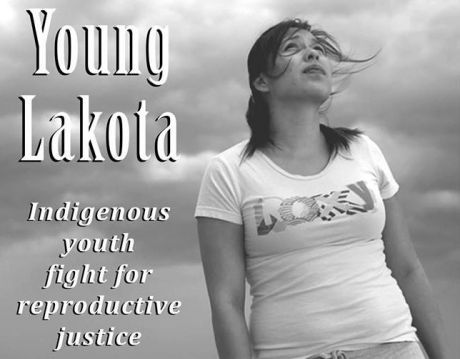Arts
You are here
Film review: Young Lakota

March 10, 2014
Young Lakota documents the tumultuous struggle for reproductive justice in South Dakota’s Pine Ridge Indian Reservation from 2006 to 2008, through the lives of three young Oglala Lakota members; twin sisters Sunny and Serena Clifford, and Brandon Ferguson, their neighbour.
In 2006 the Republican governor of South Dakota signed a bill making it illegal to preform and abortion with the exception of when the life of the woman is in danger. The law was designed as a provocation to force the issue back into the Supreme Court in an attempt to overturn Roe v. Wade.
Cecelia Fire Thunder, the first female President of the Oglala Sioux Tribal Council, responded by saying, "To me, it is now a question of sovereignty; I will personally establish a Planned Parenthood clinic on my own land which is within the boundaries of the Pine Ridge Reservation where the State of South Dakota has absolutely no jurisdiction." She added that the centre will offer abortion to both native and non-native women.
Conflict with the Christian right and anti-choice was anticipated, but internal council opposition acted swiftly as well. Cecelia was impeached by Oglala Sioux Tribal Council and accused of not getting consensus to have a Planned Parenthood clinic on reserve. In addition the Council issued a ban on all abortions on tribal land. Interviews with tribal council members expose their sexism and the influence of rigid religious beliefs.
In 2008 Law 6 was put to a statewide referendum vote, which Sunny and Serena actively campaign to defeat. The film follows Sunny campaigning for Cecelia’s unsuccessful bid for re-election to tribal council. Sunny resolves to continue to work for better lives for young women and men on the reservation. Sunny says “I’m a woman and a native American too. I am at the bottom of the bottom. Cecelia gave me a feeling of like, you’re not at the bottom, you are someone who deserves to be respected and treated right.”
The abortion ban is defeated in the referendum, and the women’s clinic is opened, despite the interference of tribal council and the state, showing that a clear majority of people want reproductive choice. Young Lakota takes an unflinching look at the intersection of reproductive justice and the fight for indigenous sovereignty.
Section:










